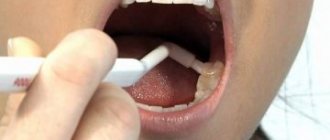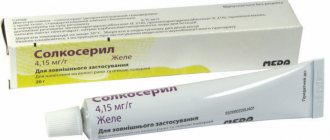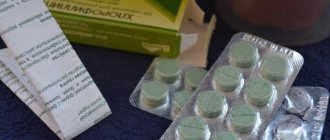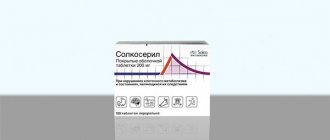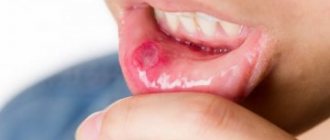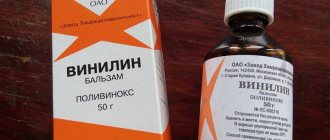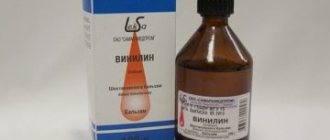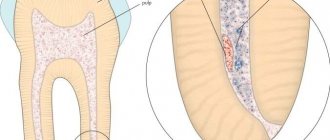Good day, dear visitors. You probably know that stomatitis is one of the most common diseases in the practice of a dentist. This problem concerns not only children who put toys and banal garbage into their mouths, but also adult patients. Therefore, we decided to discuss such an interesting topic as oxolinic ointment for stomatitis.
Developed back in Soviet times, this simple ointment is still produced by the pharmaceutical industry in post-Soviet countries and has proven that it is in no way inferior to more modern analogues. It is also produced under the names Oxonaphthylin and Tetraxolin. At the same time, oxolin is not written about outside the CIS, and drugs based on it are considered a curiosity.
Oxolinic ointment is one of the few that uses only one active ingredient. In modern pharmacology, mono-based ointments are rarely used.
What is Oxolinic ointment?
This is a pasty viscous substance based on oxoline. The ointment has a yellow tint, a homogeneous, slightly oily structure. Plastic, easily distributed over surfaces. After long-term storage, the product sometimes becomes pinkish or bluish. This feature does not affect its properties.
The medicine is released in different concentrations:
- with oxoline content 0.25%: in tubes of 10 g, used for the treatment of mucous membranes;
- with an active ingredient content of 3%: packaged in tubes of 10–30 g, suitable for treating skin or eliminating intense pathological processes.
Auxiliary compounds of the drug: wax, paraffin, vaseline oil.
How to use oxolinic ointment for stomatitis
Pharmacologists have plenty of medications to combat painful diseases, each of which has its own characteristics of use and active ingredients. But it is important to take into account one point - the nature of micro-wounds of the mucous membrane differs in each specific case, as mentioned above.
Oxolin-based stomatitis ointment is a Soviet-developed medicinal product on a “mono” basis, which is extremely rare in modern medicine. Its main purpose is to fight infectious bacteria, which include stomatitis. A characteristic feature is the presence in the composition of a powerful antiviral form that suppresses the activity and vital activity of bacteria.
Under the influence of oxolinic ointment, pathogenic microflora loses the ability to reproduce, lives a short life cycle and dies without affecting healthy cells.
Description of the drug
The release form of the drug is aluminum tubes of 10 and 30 g. It is produced by several Russian and Ukrainian pharmaceutical companies. The ointment has a white consistency of medium thickness, which oxidizes during long-term storage and acquires a pink tint.
Liniment has a number of obvious advantages:
- minimal number of contraindications for use;
- eliminates foci of inflammation in the oral cavity;
- guarantees results in a short period of time;
- indicated for use during pregnancy (after consultation with a doctor);
- the active substance acts locally and does not penetrate into the main bloodstream;
- can be used by both adults and children.
The active component of the drug strengthens the membrane membranes of cells, which does not allow pathogenic viruses to easily penetrate healthy tissues. Thanks to this, foci of infection are quickly localized, and the immune system quickly eliminates foreign microorganisms.
Operating principle
The pharmaceutical drug is used only as prescribed by a doctor, there is no talk of any self-medication in this case. In case of herpetic stomatitis, the effect is directly on the mucous membrane of the oral cavity, and therefore only 0.25% of the ointment is taken. As for the more concentrated, 3% product, its application may damage the integrity of the mucous membrane.
The action of liniment is due to 2 of its properties:
- Disinfectant - the composition suppresses the activity of pathogenic microorganisms and viruses.
- Antiviral – the active substance inhibits viruses.
Oxolinic ointment not only eliminates painful symptoms, but also fights directly against the cause of the disease, leveling the proliferation of viral cells. The medicine in question does not contain hormonal components, therefore it is successfully used to treat children under the age of 5-6 years. The ointment is used for preventive purposes - a small amount of thick consistency is used to treat the nasal passages before going outside, as well as before going to bed.
Instructions for use
To treat stomatitis in adults, oxolinic ointment is used in a special way. Before applying the composition, it is important to prepare the mucous membrane. Preparation takes place in several stages:
- Using a cotton swab dipped in rosehip extract or sea buckthorn oil, treat the entire oral cavity, paying special attention to areas affected by the disease. The main task is to remove the dry crust that has formed in problem areas.
- Rinse your mouth with chamomile decoction.
- Painful symptoms are treated with antiseptic solutions, and with their help, discomfort is eliminated.
Many people are mistaken in believing that 2-3 times of treatment is enough to solve the problem with ulcers. Oxolinic ointment is used for treatment 3-4 times a day. In terms of time, the course of treatment lasts at least 5, but no more than 10 days.
Ointments in the oral cavity are used to treat not only wounds, but also adjacent areas. Often the infection spreads to healthy skin, remaining unnoticed for a certain time. The best option is to apply the medicine to the entire mucous membrane.
Oxolinic ointment for stomatitis in children
The child's body is susceptible to infectious diseases to a greater extent than the adult body. This is due to the active growth of all organs and the formation of one’s own immune system. And if infants are partially supported by the immunity of the mother’s body, then from the age of 2, he has to rely only on himself.
Children's wounds are treated in the same way as adults.
An excellent effect for stomatitis is provided by the use of Vinilin balm. Many dentists prescribe it for gum disease. Despite the fact that we are talking about a sticky consistency, it is reliably fixed on the mucous membrane, guaranteeing a long-lasting effect.
Oxolinic ointment for stomatitis in children is used in the same sequence as for adults; the instructions for use are no different, except for one important nuance. Rinsing with decoctions is replaced by wiping problem areas with a swab dipped in a decoction of chamomile or calendula. It is better to consult a doctor, he will help you decide on the appropriate antiseptic in each specific case.
Efficiency
Pharmacology presents many effective antiviral drugs. But it is Oxolinic ointment that in the vastness of the post-Soviet space holds the palm in terms of efficiency and accessibility.
The effectiveness of the liniment in question in the fight against stomatitis is due to the sensitivity of the infection to oxoline, the main and only active ingredient of the composition.
About 20% of the active components are absorbed into the surface of the mucous membrane. The components of the ointment are quickly eliminated from the body without accumulating in it. The medicine reliably protects the oral cavity from pathogenic microflora and eliminates the likelihood of its spread. The drug penetrates the tissue, eliminating not only the symptoms of the disease, but also its cause.
Contraindications for use
The pharmaceutical product has a number of side effects. Often these are allergic manifestations, with individual intolerance to the components of the drug:
- dryness;
- burning at the site of treatment of the mucous membrane.
Doctors recommend refraining from using the medication during lactation and breastfeeding. It is better to consult a doctor before use.
How does Oxolinic ointment work?
The drug disrupts the integrity of the cell membranes of pathogens, causing their death. When applied to the surface of the skin and mucous membranes, the ointment mechanically prevents their infection, softens, and reduces the symptoms of inflammation. Oxolin affects pathogens of influenza, molluscum contagiosum, herpes simplex, adenoviruses, and rhinoviruses.
The use of ointment does not lead to a systemic effect on the body. The amount of oxoline that penetrates through the capillaries into the blood is insignificant. The product does not accumulate in tissues and has no cumulative effect. Particles that get inside are completely metabolized.
Analogs
There are a number of analogues of oxolinic ointment with a similar mechanism of action on sale:
- Cholisal gel;
- Acyclovir;
- Metrogyl denta;
- Vinylin;
- Methyluracil ointment;
- Nystatin (instructions).
Acyclovir is considered close to the liniment under consideration. Used to suppress the activity of viral microflora. There are also medications indicated for use in infants up to one year old, this is Cholisal gel, but it is expensive.
When to use Oxolinic ointment
Traditionally, the medicine is used during respiratory epidemics and when communicating with possible carriers of influenza viruses. The list of indications for use of the drug includes:
- influenza and other respiratory viral pathologies;
- blepharitis;
- inflammation of the conjunctiva;
- lichen lesions;
- molluscum contagiosum;
- dermatitis;
- herpes stomatitis;
- skin warts of viral origin.
The use of medicine for preventive purposes and at an early stage of pathologies is more effective than for advanced infections. To achieve a pronounced therapeutic effect, this drug must be combined with other drugs.
Bottom line
Oxolinic ointment defeats stomatitis of viral origin. The use of medicine against a disease caused by other reasons is not effective. Before buying an inexpensive drug at the pharmacy, you should find out the nature of the disease: for what reason did ulcers appear on the cheeks, lips and tongue? If the ulceration is viral in nature, the doctor will prescribe treatment with oxoline.
Oxolinic ointment for stomatitis in a child is indicated after the age of two. In some cases, a pediatrician/dentist may prescribe treatment with oxoline before reaching this age, however, it is not advisable to make a decision on your own. To suppress viruses in infants, there is another medicine - Cholisal.
To prevent stomatitis from affecting the oral cavity, you should strengthen your immune defense, thoroughly sanitize your oral cavity, eat rationally, avoid biting your nails, and wash off dirt from your hands before eating.
Sources used:
- Medicines in dentistry. Directory / L.N. Maksimovskaya, P.I. Roshchina. - M.: Medicine, 2001.
- Mashkovsky M.D. Medicines. — 15th ed. - M.: New Wave, 2005.
- Oxoline(English). MeSH Supplementary Concept Data. US National Library of Medicine (07/14/2000). — “Substance oxoline .. tetraoxotetrahydronaphthalene dihydrate”
Side effects of the ointment
When first applied, a slight burning sensation, increased runny nose, and irritation of the integument are likely to occur. With prolonged daily use, the nasal mucosa may feel dry. The risk of drying out is especially high during simultaneous treatment with vasoconstrictor drops. With proper use of the product, the discomfort gradually goes away on its own. If symptoms increase over time, the ointment should be discarded, as an allergic reaction is possible.
Oxolinic ointment does not affect the speed of psychomotor reactions and the activity of the central nervous system; it is allowed when driving vehicles and operating complex equipment.
Oxolinic ointment for stomatitis: application
How to use oxolinic ointment for stomatitis? Before applying the medicine to the affected areas, hardened crusts should be removed. To do this, you need to moisten a cotton swab in an oily solution of vitamin A and treat the affected areas. A replacement for the oil solution of the vitamin can be sea buckthorn or rosehip oil.
Afterwards, the oral cavity is washed with decoctions of medicinal herbs/plants:
- St. John's wort;
- chamomile;
- calendula;
- nettle.
To treat the oral cavity of children over 2 years old, wipe the mucous membrane with a swab dipped in a decoction of the listed herbs. However, first you need to make sure that the baby does not have an allergic reaction to the active components of the plants: smear a small area of the back of the hand with the decoction. If the skin does not turn red, the plant can be used for treatment.
After thoroughly treating the affected surface, apply ointment using a cotton swab. The product should be applied to the sores themselves 4 times a day. Please note: after applying oxolinic ointment to the affected area, a burning sensation may be felt. This is considered an acceptable phenomenon and should not be alarmed. The child needs to be reassured if he starts crying.
Together with the use of oxolinic ointment for stomatitis in children, comprehensive measures to strengthen immune defense are recommended.
The use of oxolinic ointment in the treatment of stomatitis in a child
The body of children is always more susceptible to infections than that of adults. This is due to the fact that the immune system is not yet developed and powerful enough to fight them.
Preliminary preparation of the oral cavity of children is no different from the process described above in adult patients. But there is one nuance here. It is difficult to get a baby to rinse his mouth with some strange and not particularly tasty liquid. Oksolin is used from the age of two inclusive. Can you imagine two-year-old children briskly running to the sink with a cup of broth? So the doctors have no idea. If oxolinic ointment is used for stomatitis in a child, rinsing can be replaced by wiping the affected areas with a swab soaked in the above compositions.
What is good about oxolin? Children do not always tolerate strong antibiotics and drugs with antibacterial effects well. In such cases, this ointment becomes a simple and safe alternative.
Another plus is the price. Go to any pharmacy and see how much medications for herpetic stomatitis cost. There are no particles of gold or blessings from above in the composition. These are ordinary pharmaceutical products of domestic and foreign production. There is nothing rare, expensive or complicated about them. Moreover, they cost so much that for this money the director of the factory must bring a tube to your door. With oxolin everything is much simpler.
In addition, this substance has long been tested, tested, and does not raise any complaints regarding its effectiveness and safety for the patient. The same cannot be said about newfangled compounds, the use of which in domestic medicine simply does not exist. Risking the health of children is not the best option when treating ordinary stomatitis.
The important thing is that this is not a symptomatic drug, but a therapeutic one. It not only eliminates external manifestations, but also fights directly with the herpes virus itself. In order to increase effectiveness, it is recommended to simultaneously use drugs that increase immunity in the oral cavity.
As mentioned above, oxolinic ointment is allowed to be used in the treatment of stomatitis in children starting from two years of age. The point is not that it will harm the baby. There simply have not been any studies that would confirm the safety of using oxolin preparations in infants and newborns.
The main disadvantage of the ointment is its liquid consistency. Children quickly lick and swallow it. Often the active ingredients do not have time to produce the desired effect.
